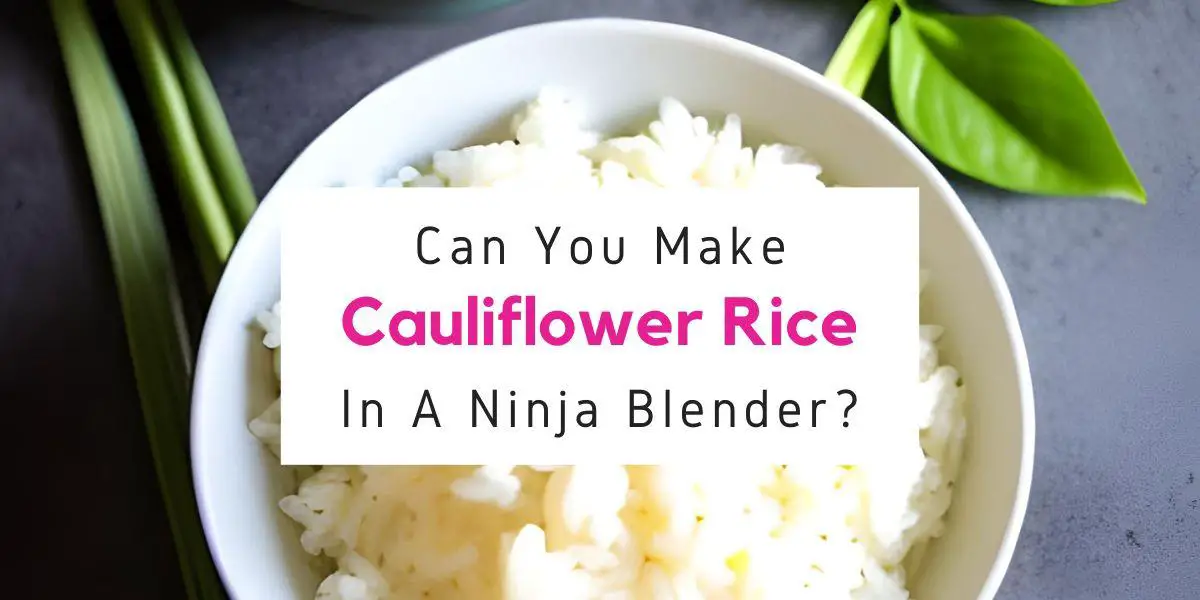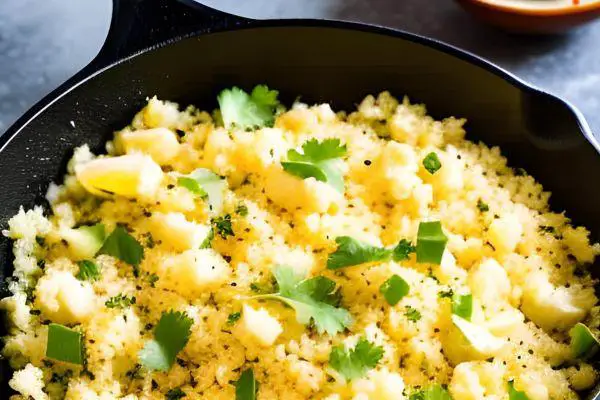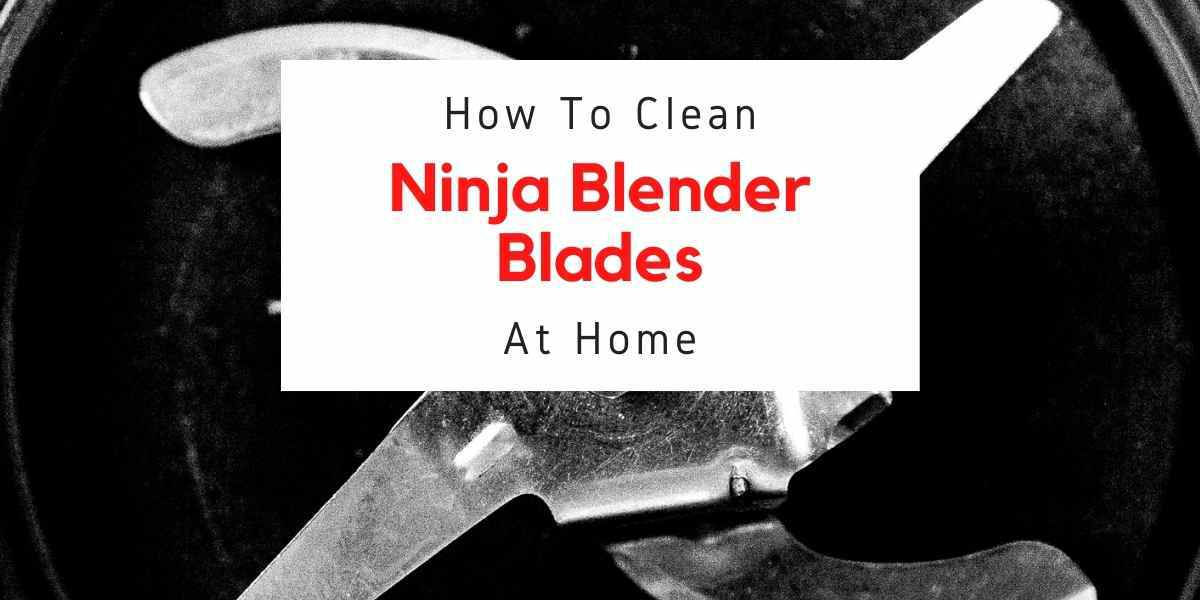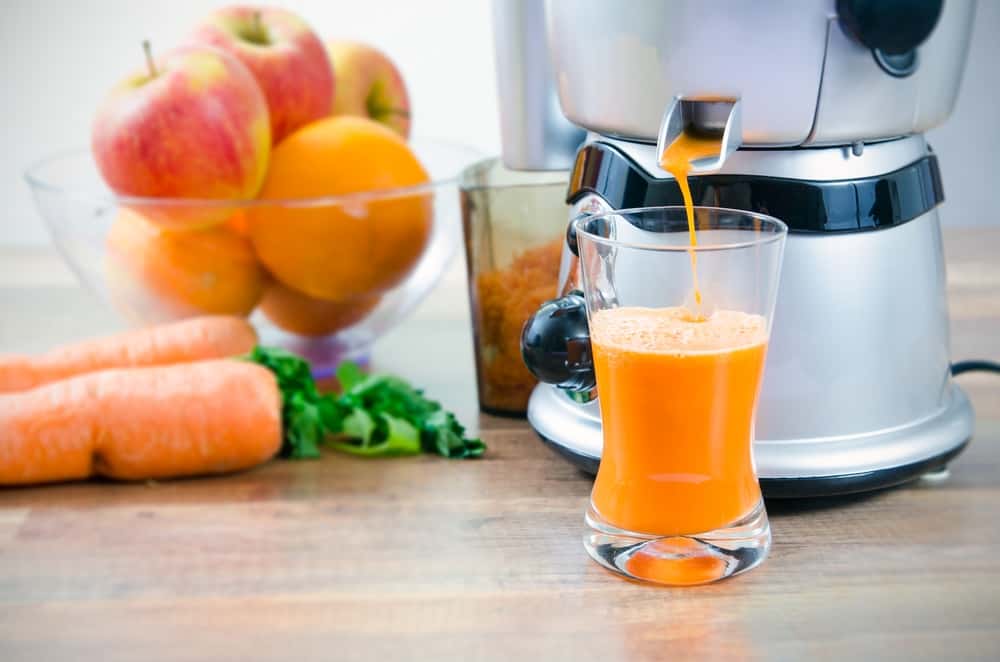I was recently asked if it was possible to make cauliflower rice in a Ninja blender. The answer is yes – it’s actually very easy to do! In this blog post, I’ll show you how to make cauliflower rice in a Ninja blender, as well as provide some tips on how to make the best cauliflower rice possible. So read on to learn more!

Can You Make Cauliflower Rice In A Ninja Blender?
As I mentioned, the answer to this question is yes – you can absolutely make cauliflower rice in a Ninja blender. In fact, it’s actually very easy to do! The key to making cauliflower rice in a blender is to use the Pulse setting.
By pulsing the cauliflower florets in the blender, you’ll be able to create a rice-like consistency without over-processing the cauliflower and turning it into mush.
How To Make Cauliflower Rice In A Ninja Blender
Here’s a step-by-step guide on how to make cauliflower rice in a Ninja blender:
Ingredients
- 1 head of cauliflower
Tools
- Ninja blender or food processor
- Cutting board
- Knife
Instructions
- Prepare the Cauliflower
- Wash the cauliflower thoroughly and remove any leaves and the tough stem.
- Cut the cauliflower into small florets. This will ensure even blending.
- Blending the Cauliflower
- Depending on the size of your Ninja blender, you might need to work in batches. Avoid overfilling the blender, as this can result in uneven blending.
- Place a small batch of cauliflower florets into the blender jar. You can fill it about halfway to ensure efficient blending.
- Use the “Pulse” function on your Ninja blender. Pulse the blender a few times for a few seconds each time. This helps break down the cauliflower without turning it into a puree.
- Check the texture after each pulse. You’re aiming for a rice-like consistency with small, even pieces. If necessary, shake the blender jar gently to distribute the florets evenly.
- Repeat and Transfer
- Continue pulsing and checking the texture until the cauliflower reaches the desired rice-like consistency. This usually takes only a few pulses, so be attentive and avoid overblending.
- Transfer the blended cauliflower rice to a bowl or container. If you’re processing multiple batches, repeat the process until all the cauliflower has been processed.
- Squeeze Out Moisture (Optional)
- Cauliflower contains a fair amount of moisture, which can affect the texture of your cauliflower rice when cooking. To minimize this, you can wrap the cauliflower rice in a clean kitchen towel and gently squeeze out excess moisture.
- Cook or Store
- You can now cook the cauliflower rice according to your recipe. You can sauté it in a pan with a little oil and seasonings, steam it, or use it in various dishes that call for rice.
Remember, the key to making cauliflower rice is to avoid overblending, as this can turn the cauliflower into mush. Using the pulse function and checking the texture frequently will help you achieve the desired result.
Additionally, when handling the blender’s sharp blades, make sure to exercise caution and follow safety guidelines.
How To Cook Cauliflower Rice

Cooking cauliflower rice is quite simple and versatile. Here’s a basic method for cooking cauliflower rice:
Ingredients
- Cauliflower rice (prepared from 1 head of cauliflower)
- Oil (such as olive oil, coconut oil, or butter)
- Salt and pepper (to taste)
- Optional seasonings and herbs (e.g., garlic, onion, herbs, spices)
Instructions
- Prepare Cauliflower Rice
- Start with cauliflower rice that you’ve either prepared yourself using a Ninja blender or purchased pre-packaged.
- Sauté Method
- In a skillet or pan, heat a small amount of oil (about 1-2 tablespoons) over medium heat.
- If you’d like, you can add minced garlic, chopped onions, or other seasonings at this point for added flavor. Sauté them for a minute or two until they are fragrant and slightly softened.
- Add Cauliflower Rice
- Add the cauliflower rice to the skillet. Season with salt and pepper to taste. You can also add any additional herbs or spices that you prefer.
- Cooking
- Sauté the cauliflower rice for about 5-7 minutes, stirring frequently. The goal is to cook the cauliflower until it’s tender but not overly mushy. The rice should still have a bit of bite to it.
- Serve
- Once the cauliflower rice is cooked to your desired texture, remove it from the heat.
- You can use cauliflower rice as a base for various dishes, such as stir-fries, fried rice, grain bowls, or as a side dish.
Tips
- Be mindful not to overcook the cauliflower rice, as it can become too soft and lose its rice-like texture.
- You can get creative with seasonings. Try adding soy sauce, lemon juice, herbs like parsley or cilantro, or even grated cheese for added flavor.
- If you prefer a softer texture, you can cover the skillet with a lid while cooking for a few minutes to steam the cauliflower rice.
- Keep in mind that cauliflower rice has a slightly different texture and flavor compared to traditional rice, but it’s a great low-carb and nutritious alternative.
Remember, cooking times may vary based on personal preference and the specific recipe you’re using, so feel free to adjust as needed.
Tips For Making The Best Cauliflower Rice
Here are some tips to help you make the best cauliflower rice:
- Choose Fresh Cauliflower: Select a fresh, firm cauliflower head. The quality of the cauliflower will impact the texture and taste of the cauliflower rice.
- Proper Preparation
- Wash the cauliflower thoroughly and remove any leaves and the tough stem before processing.
- Cut the cauliflower into small, uniform florets. This ensures even blending and cooking.
- Blending Technique
- When using a blender, opt for short pulses rather than continuous blending. This prevents overprocessing and helps achieve a rice-like texture.
- Avoid Overblending: Be cautious not to overblend the cauliflower, as it can turn into a puree. Aim for rice-sized pieces rather than a mushy consistency.
- Don’t Crowd the Blender: Blend in small batches to ensure even processing. Overloading the blender can lead to uneven results.
- Remove Excess Moisture
- Cauliflower contains water, and excess moisture can lead to a soggy final product.
- After blending, you can wrap the cauliflower rice in a clean kitchen towel and gently squeeze to remove excess moisture.
- Sauté or Steam
- Sautéing cauliflower rice in a pan with a bit of oil and seasonings can enhance its flavor and texture. Sauté until it’s tender but not mushy.
- Steaming is another option. Steam the cauliflower rice for a few minutes until it’s cooked but still has a slight crunch.
- Flavor Enhancements
- While sautéing, add aromatics like minced garlic, chopped onions, or ginger for extra flavor.
- Experiment with different herbs, spices, and seasonings to suit your taste preferences.
- Customize with Mix-Ins
- Cauliflower rice is versatile and can be used as a base for various dishes.
- Mix in cooked vegetables, protein sources (chicken, shrimp, tofu), or sauces to create a complete meal.
- Texture Matters
- Cook cauliflower rice just enough to achieve the desired texture. It should be tender but still have a pleasant crunch.
- Pair with Sauces: Pair cauliflower rice with sauces like stir-fry sauce, curry, or tomato-based sauces. The cauliflower rice’s mild flavor can complement a variety of sauces.
- Experiment: Don’t be afraid to experiment with different preparation and cooking methods to find what works best for your taste.
- Store Properly: If you have leftover cauliflower rice, store it in an airtight container in the refrigerator for up to a few days. Reheat gently to avoid overcooking.
- Combine with Traditional Rice: If you’re transitioning to cauliflower rice, you can mix it with a small portion of traditional rice to ease the transition and maintain some familiarity.
Remember that cauliflower rice has a slightly different texture and taste than traditional rice, but it can be a nutritious and versatile addition to your meals. Adjust these tips to your preferences and enjoy exploring different recipes and flavors!
Which Is The Best Ninja Blender For Making Cauliflower Rice?
If you’re looking for a Ninja blender that’s perfect for making cauliflower rice, I recommend the Ninja Professional Blender. This blender has a powerful 1000-watt motor that can easily handle blending tough ingredients like cauliflower.
Plus, the Ninja Professional Blender comes with a 72-ounce pitcher – which is perfect for making large batches of cauliflower rice. And if you don’t want to blend your cauliflower rice in batches, no problem! The Ninja Professional Blender can also blend two 16-ounce cups of ingredients at once.
So if you’re looking for a blender that’s perfect for making cauliflower rice, the Ninja Professional Blender is a great option to consider.
Recipes That Use Cauliflower Rice
Now that you know how to make cauliflower rice, here are a few recipes that use it:
1. Cauliflower Fried Rice: This recipe is a delicious and healthy alternative to traditional fried rice. Simply sauté some vegetables (I like to use onion, garlic, and carrots) in a large skillet, then add the cooked cauliflower rice and some soy sauce. Cook for an additional 3-5 minutes, or until everything is evenly mixed and heated through.
2. Cauliflower Risotto: This dish is a delicious and creamy vegan version of the classic Italian dish. To make it, simply sauté some minced onion and garlic in a large skillet. Then, add the cauliflower rice and cook for 3-5 minutes. Next, add vegetable broth and cook until the rice is tender and creamy. Finally, stir in some vegan Parmesan cheese and serve.
3. Cauliflower Rice Burrito Bowls: This recipe is perfect for a quick and easy lunch or dinner. Simply sauté some cauliflower rice in a large skillet with onion, garlic, and your favorite seasonings. Then, add black beans, corn, diced tomatoes, and avocado. Serve everything in a bowl and enjoy!
As you can see, there are many different ways that you can use cauliflower rice. Whether you’re looking for a healthy alternative to traditional rice or just want to try something new, give cauliflower rice a try! You won’t be disappointed.
The Benefits Of Eating Cauliflower Rice
Eating cauliflower rice offers several benefits, especially for those looking to reduce their carbohydrate intake, increase vegetable consumption, or follow specific dietary patterns. Here are some of the key benefits:
- Low in Carbohydrates: Cauliflower rice is significantly lower in carbohydrates compared to traditional rice. This makes it a suitable option for people following low-carb diets, such as the ketogenic diet or Atkins diet.
- Reduced Caloric Intake: Since cauliflower rice is lower in calories than regular rice, it can be a helpful choice for those aiming to manage their calorie intake and achieve weight loss or maintenance goals.
- Rich in Nutrients: Cauliflower is a nutrient-rich vegetable. It’s a good source of vitamins C and K, as well as various B vitamins, fiber, and minerals such as potassium and magnesium.
- High in Fiber: Fiber is important for digestive health and can help regulate blood sugar levels. Cauliflower rice provides dietary fiber that contributes to overall gut health and can help you feel fuller for longer.
- Gluten-Free: For individuals who need to avoid gluten due to celiac disease or non-celiac gluten sensitivity, cauliflower rice is a naturally gluten-free alternative to traditional grains like wheat rice.
- Versatile: Cauliflower rice can be used in a variety of dishes, including stir-fries, casseroles, burrito bowls, and more. It absorbs flavors well and can be easily customized with different seasonings and ingredients.
- Blood Sugar Management: The lower carbohydrate content of cauliflower rice can be beneficial for individuals with diabetes or those looking to manage their blood sugar levels.
- Supports Low-Carb Diets: For individuals following diets that encourage lower carbohydrate intake, such as the Paleo diet or Whole30, cauliflower rice can be a valuable substitute for grains.
- Increased Vegetable Intake: Incorporating cauliflower rice into your meals can boost your vegetable consumption without drastically changing your eating habits. This is particularly beneficial for those who struggle to eat enough vegetables.
- Promotes Variety: Switching up your diet by adding cauliflower rice can help prevent food monotony and encourage a more diverse range of nutrients.
- Easy to Make: Preparing cauliflower rice is straightforward, especially with the help of kitchen tools like blenders or food processors. It’s a convenient way to add more vegetables to your diet.
- Dietary Flexibility: Cauliflower rice works well with various dietary preferences, including vegetarian, vegan, paleo, gluten-free, and more.
However, it’s important to note that while cauliflower rice offers numerous benefits, it’s not a direct replacement for the nutritional profile of whole grains. It’s always a good idea to maintain a balanced and varied diet that includes a mix of nutrient-rich foods.
If you’re considering making significant dietary changes, consulting a registered dietitian or healthcare professional is recommended to ensure that your nutritional needs are met.
Final Verdict – Can You Make Cauliflower Rice In A Ninja Blender?
If you’re looking for a healthy and delicious alternative to white rice, cauliflower rice is a great option. And if you’re wondering whether you can make it in a Ninja blender, the answer is yes!
To make cauliflower rice, simply place florets into the blender and pulse until they’re broken down into small pieces. Then, add your favorite seasonings and cook in a pan over medium heat until tender.
Whether you’re trying to eat healthier or just want to mix up your side dish routine, give Ninja-made cauliflower rice a try!




